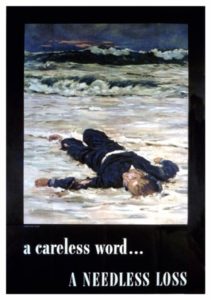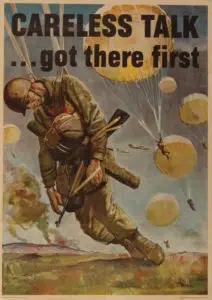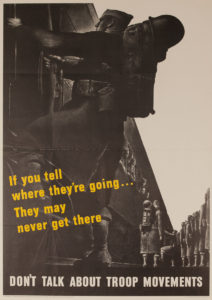Espionage Posters

A Careless Word, a Needless Loss
Artist: Anton Otto Fischer
Publisher: U.S. Government Printing Office
Printed: 1943
Timeline: WWII
During World War II, as with every other conflict, concerns were high regarding national security. This 1943 poster reminds citizens that sharing any military information such as troop movements, or other details could help the enemy sabotage the war effort.

Careless Talk… Got There First
Publisher: U.S. Government Printing Office
Printed: 1944
Timeline: WWII
This poster from the Office of War Information graphically portrays a possible result of someone’s thoughtless gossip. It is the work of Herbert Morton Stoops. Mr. Stoops, a battery commander during the First World War, won eminence as an artist for his work portraying the military. He won many awards for his artistic works done for the US Armed Services.

If You Tell Where They’re Going… They May Never Get There
Publisher: Office of War Information
Printed: 1943
Timeline: WWII
This World War II poster was produced and distributed by the Office of War Information in 1943 and implored its readers to keep any information they had about troop movements to themselves. While service members were accustomed to being told to remain quiet about their orders, the public had to be asked to not gossip about where their loved ones were being sent in order to keep battle plans as secret as possible. As such, many American propaganda posters during WWII were focused on educating the general public about the dangers of talking about troop movements. This is one of the more effective of such posters, with the artist using the early morning gray at dawn as loved ones send the troops off on the morning train, something that invoked an increasingly relatable feeling to the average American on the home front.
